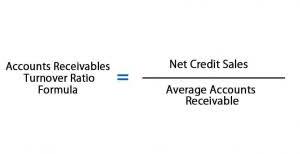
The amortization can be done equally in each accounting period up to the end of the bond’s life. Alternatively, it can be done based on a reduced balance of bonds. The amount that is amortized in each period forms part of the expenses.
If you are a residual interest holder in a REMIC, you must report as ordinary income on Schedule E (Form 1040) the total amounts shown on Schedule Q (Form 1066), lines 1b and 3b. If you are a REMIC regular interest holder, you must include the amount of any expense allocation you received on Form 1040 or 1040-SR, line 2b. If your club is taxed as a corporation, it must file Form 1120, U.S. In that case, you do not report any of its income or expenses on your individual return. All ordinary income and expenses and capital gains and losses must be reported on the Form 1120. Any distribution the club makes that qualifies as a dividend must be reported on Form 1099-DIV if total distributions to the shareholder are $10 or more for the year.
Income Statement
The marked-to-market rules also apply if your obligation or rights under section 1256 contracts are terminated or transferred during the tax year. In this case, use the fair market value of each section 1256 contract at the time of termination or transfer to determine the gain or loss. Terminations or transfers may result from any offsetting, bond premium amortization schedule delivery, exercise, assignment, or lapse of your obligation or rights under section 1256 contracts. The transfer of investment property to a corporation, trust, fund, foundation, or other organization, in exchange for a fixed annuity contract that will make guaranteed annual payments to you for life, is a taxable trade.
In 2022, you received $2,163.20 ($2,000 principal and $163.20 interest). If you use the cash method, you must include in income on your 2022 return the $163.20 in interest you received in that year. Generally, a bond you acquired at original issue is not a market discount bond. If your adjusted basis in a bond is determined by reference to the adjusted basis of another person who acquired the bond at original issue, you also are considered to have acquired it at original issue. Treat any item you keep as an OID bond originally issued and bought by you on the sale date of the other items.
AccountingTools
If a share was bought over more than one purchase date, your holding period for that share is a split holding period. A part of the share is considered to have been bought on each date that stock was bought by the bank with the proceeds https://www.bookstime.com/ of available funds. If you close a short sale of SBIC stock with other SBIC stock you bought only for that purpose, any loss you have on the sale is a capital loss. See Short Sales, later in this chapter, for more information.
- If part of the amount you report is your child’s capital gain distributions, that part (which is reported on Schedule D (Form 1040), line 13; or Form 1040, line 7) generally does not count as investment income.
- You bought 10,000 shares of ABC Mutual Fund common stock on July 5, 2022.
- If a call you write is exercised and you sell the underlying stock, increase your amount realized on the sale of the stock by the amount you received for the call when figuring your gain or loss.
- Several rows above line 6, put a subtotal of all dividend income listed on line 5.
- The taxable part of OID is the OID determined in Step 1 minus the nontaxable part determined in Step 2.
- This net loss is recognized and treated as 60% long-term capital loss and 40% short-term capital loss attributable to the section 1256 contract.
If, on the date of the short sale, you held substantially identical property for more than 1 year, any loss you realize on the short sale is a long-term capital loss, even if you held the property used to close the sale for 1 year or less. Certain losses on short sales of stock or securities are also subject to wash sale treatment. If you received exempt-interest dividends on the stock, at least part of your loss is disallowed. You can deduct only the amount of loss that is more than the exempt-interest dividends.
Bond Premium with Straight-Line Amortization
However, there are special rules for reporting the discount on certain debt instruments. See U.S. Savings Bonds and Discount on Debt Instruments, earlier. If you buy a stripped bond or stripped coupon, treat it as if it were originally issued on the date you buy it.
On Schedule B (Form 1040), Part I, line 1, enter your interest income as shown on Form 1099-INT—$518. If you had other taxable interest income, you would enter it next and then enter a subtotal, as described earlier, before going to the next step. Savings Bond Interest Previously Reported” and enter $516.40 ($518 − $1.60). Subtract $516.40 from $518 and enter $1.60 on Schedule B (Form 1040), line 2. Add this amount to your subtotal (if any) and in the total on Schedule B (Form 1040), line 4.
Cash Flow Statement
Report the sale or exchange on Form 8949, Part II, as you would if you were not taking the exclusion. Enter “X” in column (f) and enter the amount of the exclusion as a negative number in column (g). See the instructions for Form 8949, columns (f), (g), and (h). Report the entire gain realized from the sale in Part I or Part II of Form 8949.

This interest, however, as well as all interest earned after the reissue, is income to the former co-owner. But, if the bonds were reissued in your name alone, you do not have to report the interest accrued at that time. Series HH bonds that have not matured pay interest twice a year, usually by direct deposit to your bank account. If you are a cash method taxpayer, you must report this interest as income in the year you receive it. You deposited $5,000 with a bank and borrowed $5,000 from the bank to make up the $10,000 minimum deposit required to buy a 6-month certificate of deposit.